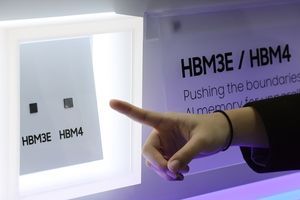
Elon Musk has shown significant interest in artificial intelligence (AI). Previously, he announced in an interview with the media that he would create an AI called TruthGPT. Around the same time, news broke that Musk had purchased many graphics processing units (GPUs) essential for AI development. Although there were no concrete clues, from this point on, people accepted Musk’s involvement in AI development as a foregone conclusion.
Last July, Musk personally revealed the identity of the AI startup xAI, which he founded, thereby firing the starting gun for direct AI development. Only four months later, Musk unveiled the identity of Grok, an AI service developed by xAI. Grok is a text-based generative AI similar to OpenAI’s ChatGPT. When someone enters a command in text, it produces a corresponding result.
At the time, Musk described Grok as an AI that enjoys satire and produces humorous responses. He also promised to integrate Grok into social media apps and to launch it as a standalone app. However, Musk and xAI did not mention a specific release date for Grok. The only news conveyed was that initial testing had begun with some users.
Musk: “Will be provided to X paid subscribers next week”

According to IT media outlet TechCrunch on November 23 (local time), Musk stated via his X account that “all X Premium Plus (+) subscribers will be able to use Grok next week.” Premium Plus is the most expensive X-paid subscription, costing $16 monthly. Therefore, Grok is a paid AI chatbot that can only be used by paying a fee.
Recently, app researcher and web developer Nima Owji shared a few screenshots showing how Grok operates on X. From the images he shared, Grok appears as a separate icon on the main screen sidebar of X. It seems to be usable by clicking on it. For non-paying subscribers, a message appears saying, ‘Purchase a plan to use Grok.’
The basic screen of Grok integrated into X is no different from other AI chatbots. There is only a text input field at the bottom. The rest of the space is for transmitting commands and AI responses.


What sets Grok apart from other chatbots?
In the big picture, Grok differs significantly from services like OpenAI’s ChatGPT and Google’s Bard. According to foreign media outlet AndroidAuthority, Grok, like other AI chatbots, is based on a large language model (LLM). The fact that it has learned a vast amount of information available on the internet is also similar. Grok uses the LLM Grok-1 model developed by xAI and leverages real-time information from X.
xAI explained that the Grok-1 model has only half the parameters of the LLaMA 2 developed by Meta, but the performance is similar. LLaMA 2 has 70 billion parameters, while the Grok-1 model has 33 billion. It is generally known that the more LLM parameters, the better the service performance. xAI also claimed that Grok-1 surpassed OpenAI’s GPT-3.5 in LLM benchmarks.

However, it seems that Grok has not yet solved the chronic problem of AI hallucinations. The hallucination phenomenon is where the generative AI convincingly packages and responds with false information far from reality. xAI explained that it “can still generate false or contradictory information” and promised to work on ensuring reliability.
The fact that Grok obtains real-time information from the X platform is also a cause for concern. This is because much inaccurate information circulates on social media due to its nature. The media predicted that “a significant amount of information floating around X is inaccurate” and “this may not ultimately work to Grok’s advantage.”
OpenAI, Google, MS… Leading the pack
Companies like OpenAI, Google, and Microsoft (MS) are already leading the field of text-based generative AI. Recently, OpenAI announced the GPT-4 Turbo model, which has learned the latest information. GPT-4 Turbo has increased the amount of input information from 3,000 words to the equivalent of 300 pages of documents. It also supports multimodal functions that can recognize images and voices.

Google is steadily improving the performance of its AI chatbot, Bard, and is especially integrating it into its services. It integrates Bard into apps like YouTube and Google Maps, which many users use. Microsoft also incorporates a generative AI called Copilot into various in-house services, including the PC operating system (OS) Windows and document creation programs like Word and PowerPoint.
Amazon, a latecomer, has promised to develop an LLM model called Olympus, which has up to 2 trillion parameters. In comparison, Grok does not yet show any special advantages. Of course, the actual performance and availability should be examined after the official release, but for now, concerns prevail. What form Grok will take when it emerges remains to be seen.
By. Yoon Jung Hwan










Most Commented